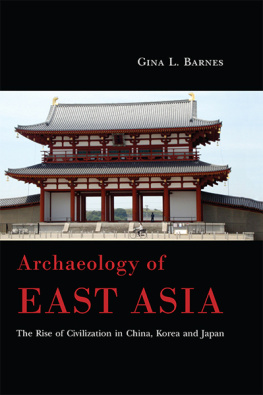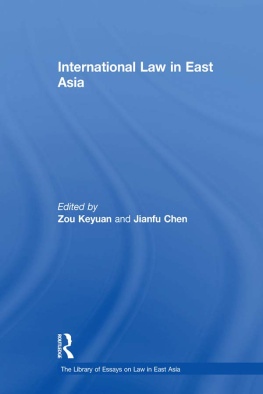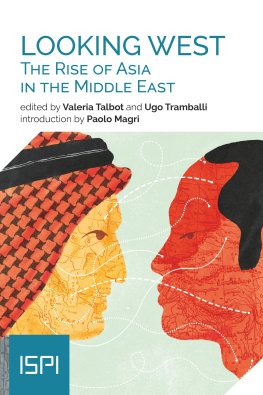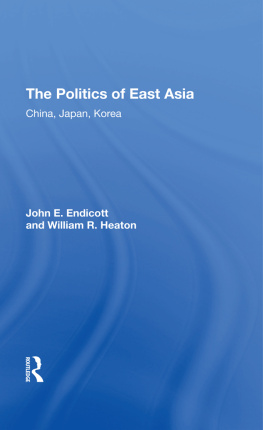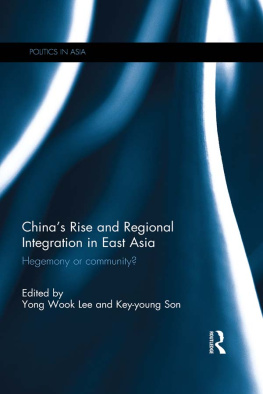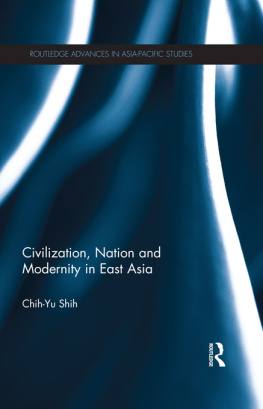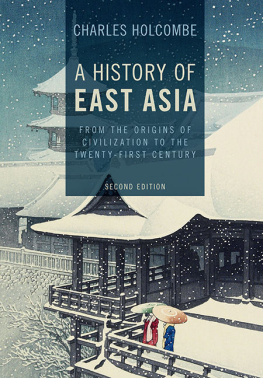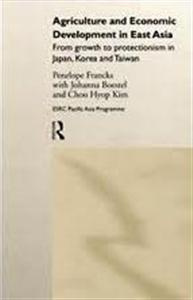Published in the United Kingdom in 2015 by
OXBOW BOOKS
10 Hythe Bridge Street, Oxford OX1 2EW
and in the United States by
OXBOW BOOKS
908 Darby Road, Havertown, PA 19083
Gina L. Barnes 2015
Illustrations Gina L. Barnes, except for those illustrations which have been reproduced here under Public Domain or Creative Commons licenses these are offered here under those same licenses.
Hardback Edition: ISBN 978-1-78570-070-5
Digital Edition: ISBN 978-1-78570-071-2
Kindle Edition: ISBN 978-1-78570-072-9
PDF Edition: ISBN 978-1-78570-073-6
A CIP record for this book is available from the British Library
Library of Congress Cataloging-in-Publication Data
Barnes, Gina Lee.
[China, Korea, and Japan]
Archaeology of East Asia : the rise of civilization in China, Korea and Japan / Gina L. Barnes.
pages cm
Originally published under title: China, Korea, and Japan : the rise of civilization in East Asia. 1993.
Also published under title: Rise of civilization in East Asia : the archaeology of China, Korea and Japan. 1999.
Includes bibliographical references and index.
ISBN 978-1-78570-070-5 (hardback) -- ISBN 978-1-78570-071-2 (epub) -- ISBN 978-1-78570-072-9
(mobi) -- ISBN 978-1-78570-073-6 (pdf ) 1. East Asia--Civilization. 2. East Asia--Antiquities. I. Title.
DS509.3.B37 2015
931--dc23
2015021194
All rights reserved. No part of this book may be reproduced or transmitted in any form or by any means, electronic or mechanical including photocopying, recording or by any information storage and retrieval system, without permission from the publisher in writing.
Printed in Malta by Melita Press Ltd.
For a complete list of Oxbow titles, please contact:
| UNITED KINGDOM | UNITED STATES OF AMERICA |
| Oxbow Books | Oxbow Books |
| Telephone (01865) 241249, Fax (01865) 794449 | Telephone (800) 791-9354, Fax (610) 853-9146 |
| Email: | Email: |
| www.oxbowbooks.com | www.casemateacademic.com/oxbow |
Oxbow Books is part of the Casemate Group
Front cover: Suzakumon, the southern gate to Heijo Palace, Nara. Photo: GL Barnes 2008
Contents
List of Boxes
List of Figures (including various maps)
List of Tables
Preface
Multiple editions
The first edition of this book was published in hardback in 1993 as China, Korea and Japan: the rise of civilization in East Asia (London, Thames & Hudson, 1993). In 1999, that version was reprinted in paperback under a better title using the word archaeology: The rise of civilization in East Asia: the archaeology of China, Korea and Japan (London, Thames & Hudson, 1999). Only very minor corrections within word count were made in the paperback edition, and these first two editions have exactly the same pagination and format; I refer to them collectively as CKJ.
This current offering is a revised edition of the content of CKJ after twenty years. Most of the text has been rewritten; many photographs are also replaced, since those originally published in CKJ mainly belonged to the Thames & Hudson files. Colleagues and others have been most helpful in supplying photos and illustrations with proper copyright for inclusion here. Other illustrations, particularly line drawings, have been re-used from CKJ when nothing better has superseded them.
In trying to bring this book up to date, I have encountered three hurdles. One is the vast amount of information published since 1990, resulting in more detail, in changes of emphasis in the available data, and in changes in our perspectives in viewing those data. Second, it was much easier to condense broad swaths of prehistory into a few paragraphs when I knew less myself. Third, method and theory have become more important in writing any kind of archaeology, so that the setting of East Asian data within these frameworks has become necessary. Data were intentionally selected to illustrate general trends in development, areas of scholarly disagreement, and outstanding florescence in material culture with a vision of an East Asian Civilization at the end of the process. With the increase of information available on the internet, it is no longer necessary nor feasible to indulge in long descriptions of individual sites or cultures easily obtained elsewhere with a couple of clicks and most likely with enviable color illustrations.
Thus, this revision is much more technical than CKJ, though it remains an introduction and is not designed to be comprehensive despite the inevitable generalizations. I have striven to follow the same pattern of discussion as in CKJ, and have also tried to identify corrections to CKJ (in footnotes), particularly in terms of advances in knowledge. I hope that the general reader and beginning student will find the deeper level of detail in this volume still accessible within the overall framework of tracing the development of East Asian societies from the Palaeolithic to the early historic period. If not, read CKJ first! If so, the framework of time/space/content outlined here will allow deeper forays into those areas of particular interest to the new reader via the Further Readings and the Bibliography.
This series of books has two main readerships: those coming from East Asian studies, and those from archaeology. Accommodations have been made for both groups: explanation of many archaeological methods and concepts for the former, and source information from English-language works as much as possible for the latter. Please forgive these indulgences.
CKJ = the same book in hardback and paperback editions but with different titles:
Barnes, Gina L. (1993) China, Korea and Japan: the rise of civilization in East Asia. London: Thames & Hudson (hardback)
Barnes, Gina L. (1999) The rise of civilization in East Asia: the archaeology of China, Korea and Japan. London: Thames & Hudson (paperback)
Where is East Asia?
Commonly this term refers to the territories of the modern states of China, Korea and Japan. However, state boundaries are meaningful to prehistory only in terms of the investigating organizations and the languages in which reports are written today. The locations of sites are usually (but not in this work) given in terms of modern prefectures and provinces of the individual countries, which are displayed in the maps in for reference. Because of the boundary (or boundless) problem, we will often stray into Mongolia, the Altai, Central Asia and Vietnam to illuminate what was happening in East Asia as strictly defined. However, this work does not deal much with the archaeology of the far west and south Mainland; in particular, Silk Road archaeology is entirely another field which deserves separate treatment.
Dating preferences
One of the most difficult things for newcomers to archaeology anywhere is shifting between BP or years ago and BC/AD (BCE/CE) dates a 2000-year difference. BP (before present) specifically refers to the present as 1950 the date when radiocarbon dating began and is used primarily for radiocarbon dates (). There are several such methods of scientific dating, and dates tend to be given in years ago (BP), whereas archaeologists tend to talk in terms of calendar dates BC/AD or BCE/CE.
This book will use two forms of notation: years ago, and BC/AD; dates for the Pleistocene and Palaeolithic are given as mya (million years ago) and kya (thousand ) are cited (as cal.), but often it is difficult to tell from publications whether they are calibrated or not, and conventional radiocarbon dates produced decades ago often are missing metadata that allows them to be calibrated. Thus one must remain flexible in dealing with dates due to the many problems in their calculation and presentation; those presented here are only approximations.
Next page
